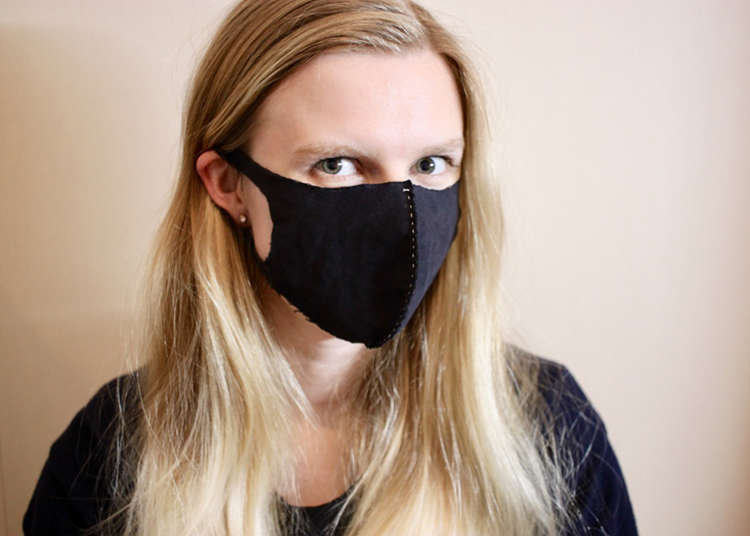
Japan has been using masks since well before the outbreak of the coronavirus. Be it for hay fever, avoiding spreading your own cold, or simply to hide a zit that makeup just won’t cover. But finally it seems that the world is catching on, and masks are even becoming compulsory in shops abroad. So what do you do if you can’t get your hands on one? Make it yourself, of course!
So today we turn to Japan’s infinite mask wisdom, and are using the instructions from a YouTube video from the renowned store, “Yuzawa”, that specializes in handicrafts, fabrics and hobby crafts. Cassie and Tim from Live Japan’s editorial team are going to give them a go.
Keep in mind some of these will need special fabrics and materials you may not just have lying around – but most things will be available online or at a fabric store, and it beats not having a mask at all!
No Sew East Mask: Just Use Tape!
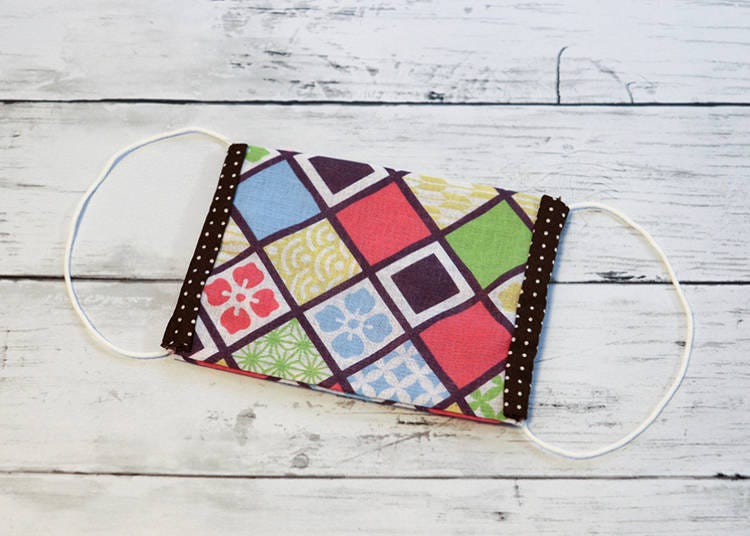
The first one we tried out was the “No Sew Easy Mask” (縫わない!お手軽マスク). It says to use water-resistant double-sided tape to make the mask without using a sewing machine or hand stitching.
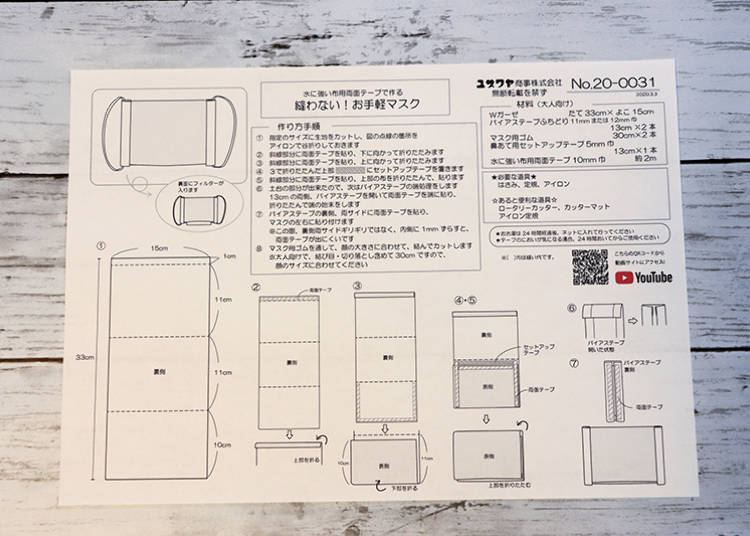
We’re making it following the YouTube video from Yuzawa (found at the bottom of this page), and you can download the templates and instructions online for free. However, they are of course in Japanese, so we’ll run through the steps here.
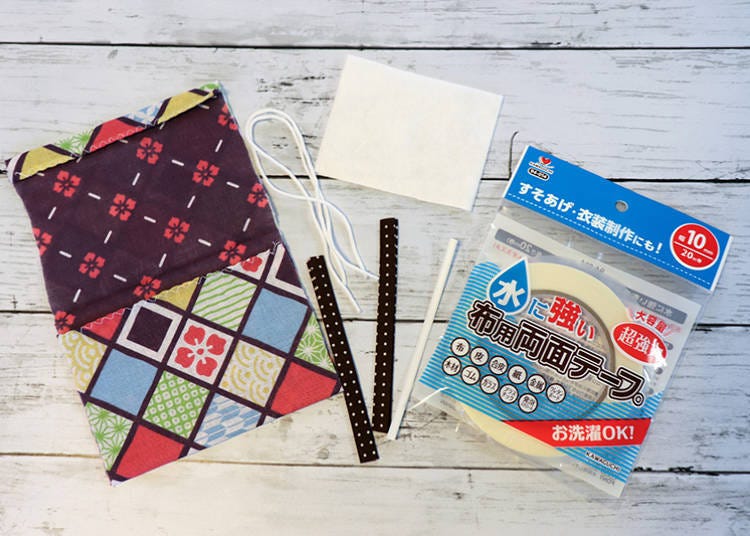
Materials Required
-Double gauze (or lightweight breathable fabric): Height 33 cm x Width 15 cm
-Hemming tape (11-12 mm in width) Length 13 cm x 2 pieces
-Elastic ear bands -30 cm x 2 pieces
-Nose wire* (5 cm width)- Length 13 cm x1
-Water resistant, double-sided tape (10 cm width)
(Also pictured, optional filter fabric 11cm x 15cm)
*Nose wire is optional, but you can use any flexible metal wire, including the twist wires sometimes found on packaging, for example.
To create this, you will need scissors, a ruler, and an iron. It’s also handy to have a rotary cutter, and a cutting mat, but not necessary.
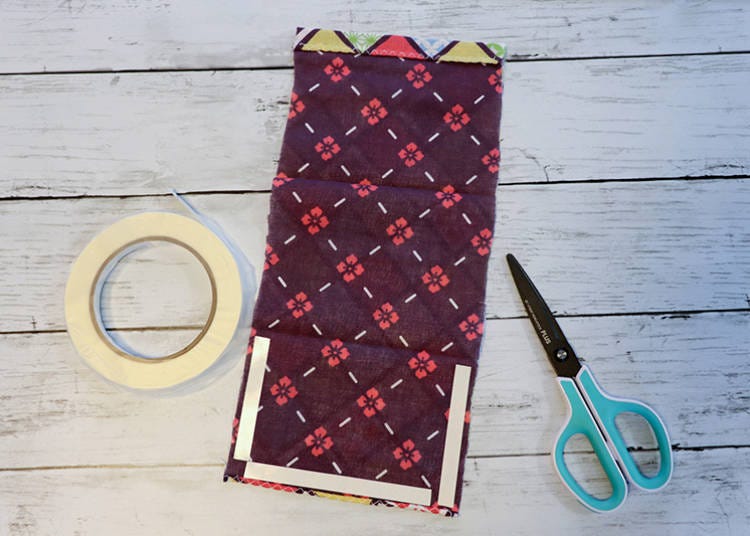
After cutting the material to size as written in the downloadable instructions (No.20-0031), iron three creases at 11cm intervals. Then place tape on the three edges of one of the segments, and fold and stick to the middle segment. Here you can add the filter fabric if you have one.
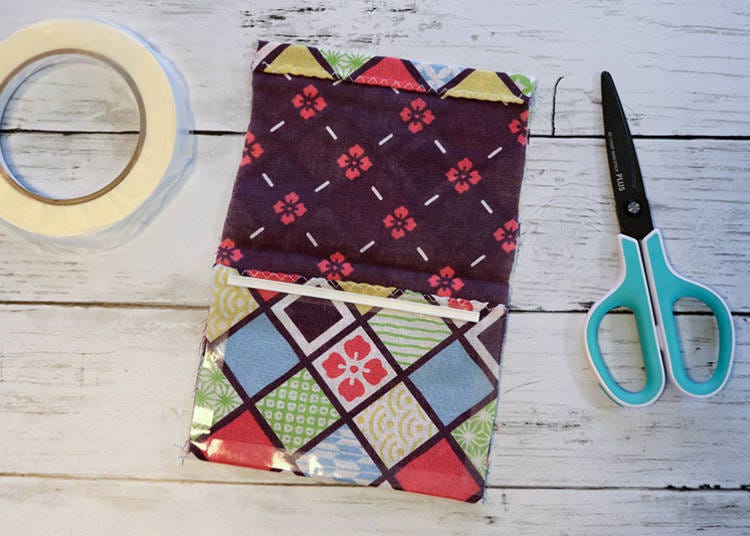
On top of the segment you have just folded, add your nose wire. Remember to watch the video if you get lost.
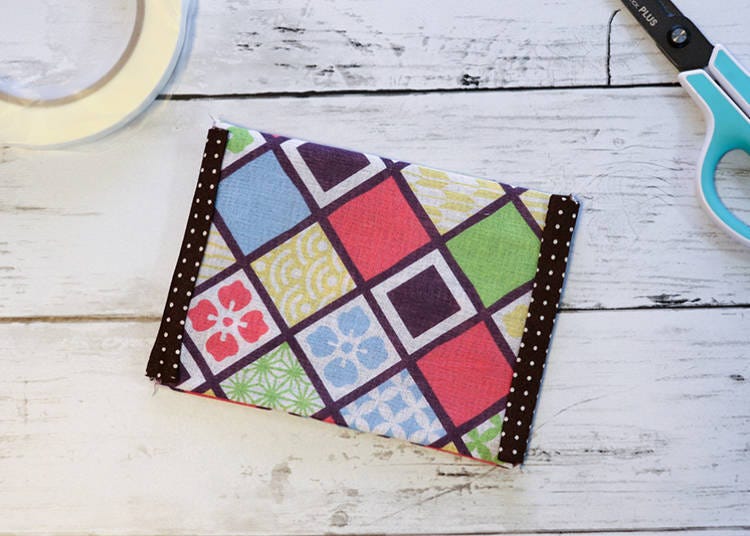
Fold up the last segment and neaten up the sides with the hemming tape, leaving a gap for the elastic.
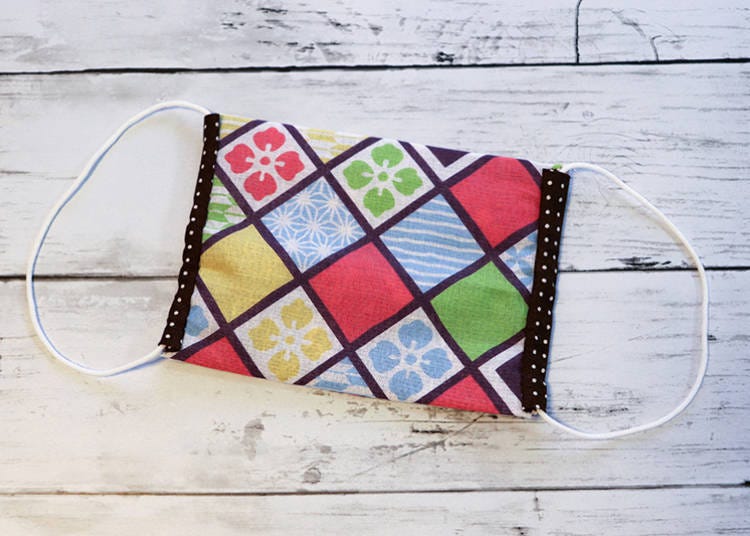
Thread the elastic through the hemming tape gap, place it on your face and tie it according to your needs. Move the elastic round to hide it in the tape and you’re done! No sewing necessary!

Tim liked the idea of this simple one. He said: “The fabric feels a bit thicker than an ordinary mask, which makes me feel at ease. The filter fabric in between the layers doesn’t really move either, so it seems like a pretty good design to me!”.
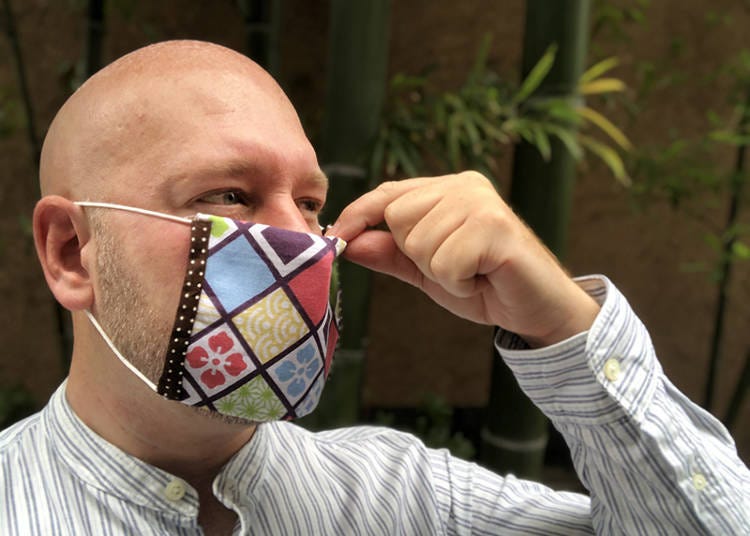
However he did have a slight problem with the material not being stretchy. “I thought because of the nose wire it would be flush to my face, but seeing as the fabric isn’t stretchy, there’s quite a big gap on either side of my nose.”
With this one you’re required to fold it twice, which perhaps make it a bit thicker and stiffer. If you can find a stretchy, breathable fabric it may be more suitable. But with the layers, it’s easy to put in a filter for added peace of mind, so it seems like a pretty good solution.
No Sew Easy Mask
*Instruction video
Easy Sewing: One Line of Hand Stitching “Stretch Mask”
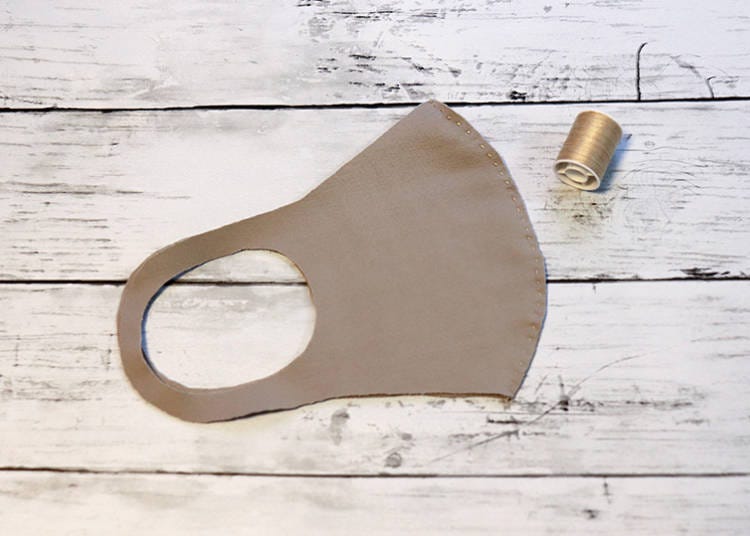
Next up is the “stretch mask” (ストレッチマスク). This one is arguably even simpler than the first, where you only need to cut the fabric and then stitch in one place. The mask is made up of two pieces of fabric (About 17cm x 15cm), and the only other things you need are scissors, thread and a needle.
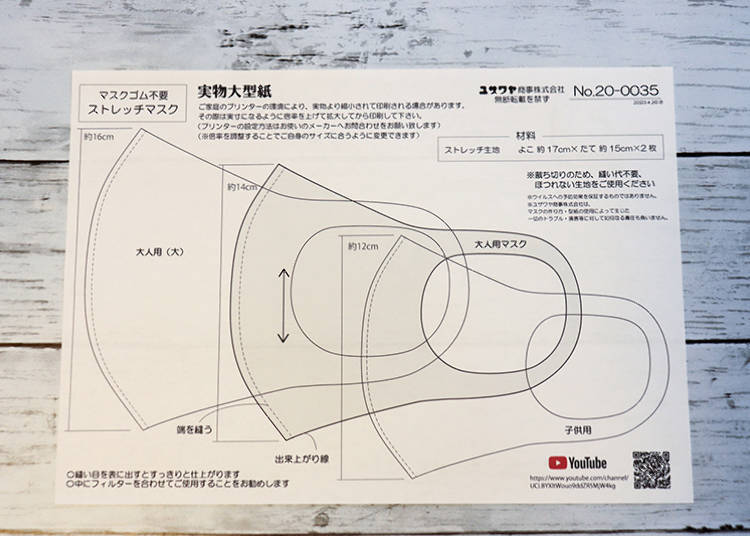
First up, download the template from the official Yuzawa website (found at the bottom of this section). There are three types on this template, from biggest to smallest as follows: Adult L, Adult M, Child. If this still seems too small, simply change the zoom settings when printing to better suit your needs. Then cut out the template.
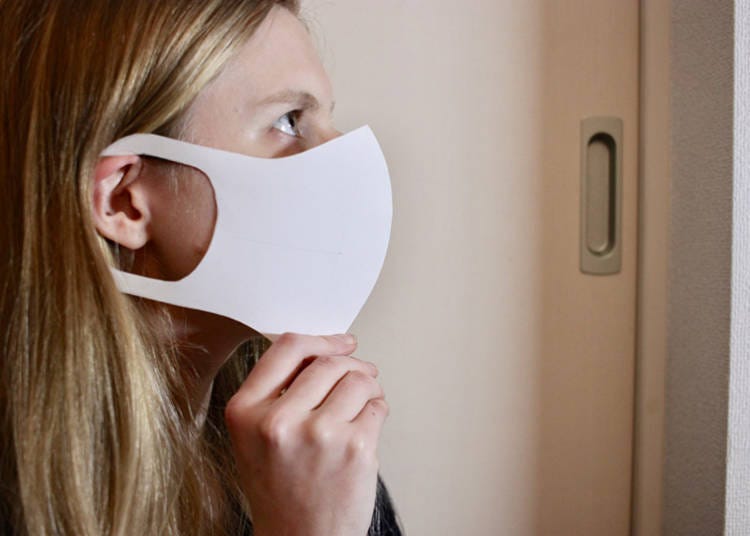
Cassie made this one herself, and started off by checking the template size against her own face before cutting out the fabric.
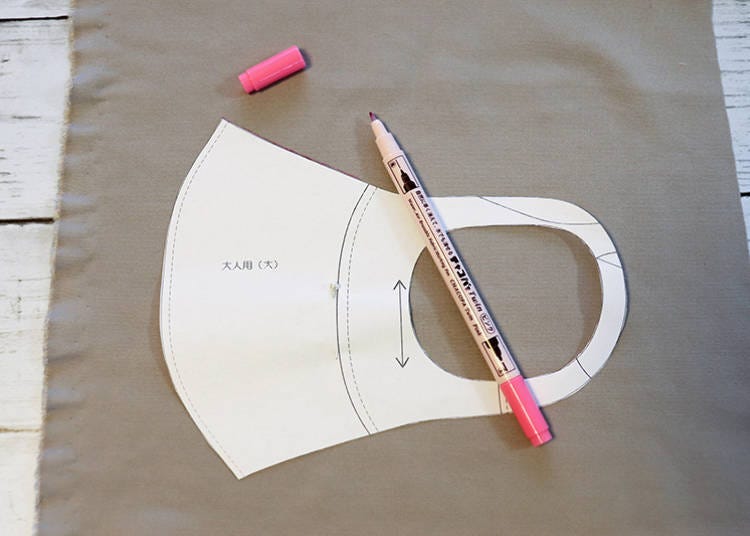
Using the printed template, draw straight onto the fabric with chalk, a chalk pen, or a marker. (Be careful when using a marker as it might show through on the other side). And don’t forget to draw the ear hole!
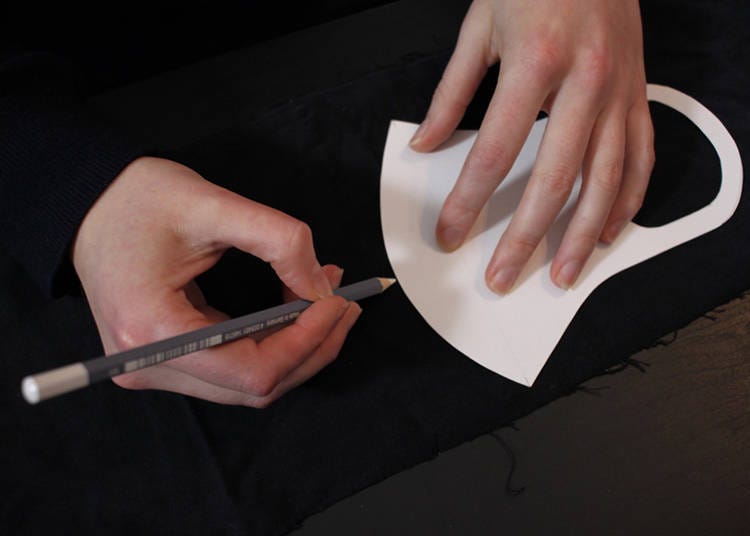
Cassie didn’t have any special material to hand, so she used an old pair of stretchy skinny jeans.
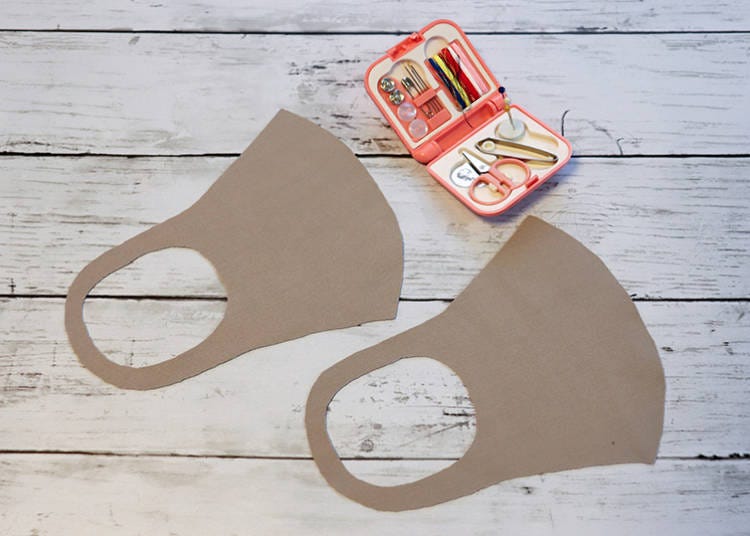
Once you’ve cut out your two pieces, put them together and sew along the outer edge.

If you have a sewing machine, this will be faster and easier, but given that it’s only one line, it’s quite easy to do by hand with a simple stitch.
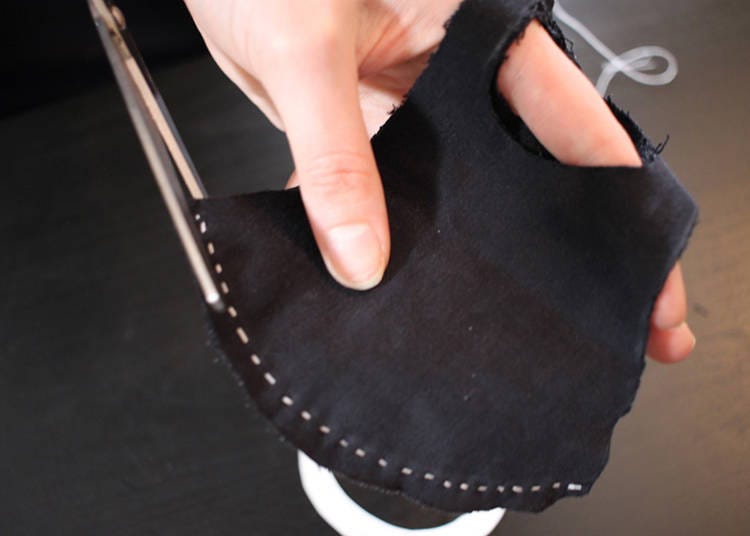
Lastly, cut off any excess just outside of the stitching.
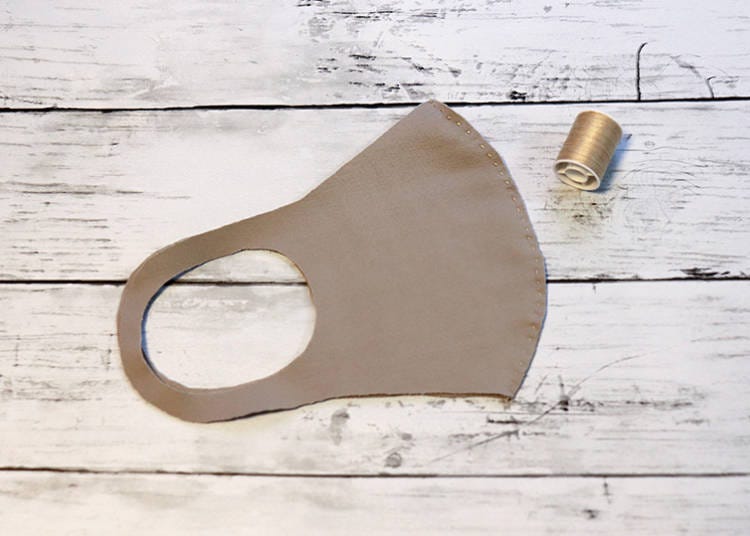
All done - That was quick! The skinny jeans fabric frayed quite a bit, so it’s best to use an easy-to-cut fabric instead. Otherwise, you can leave excess, fold and stitch to make a neater seam.
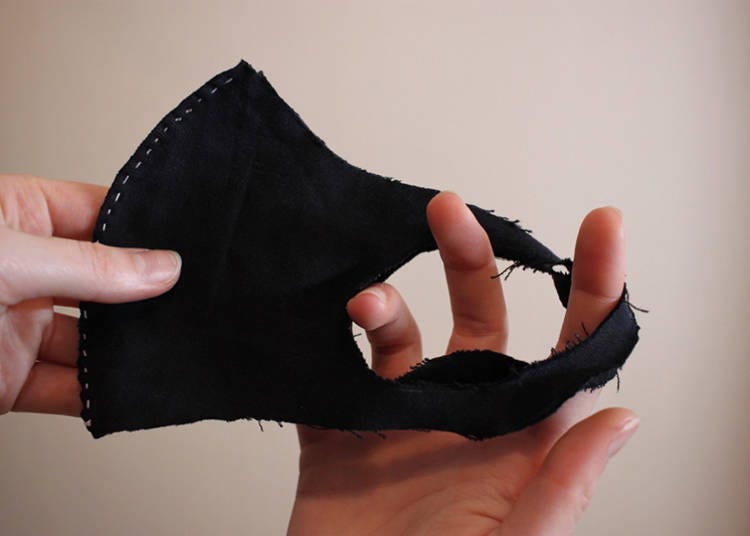
"This is what happens when you don’t use a special fabric!" Cassie lamented.
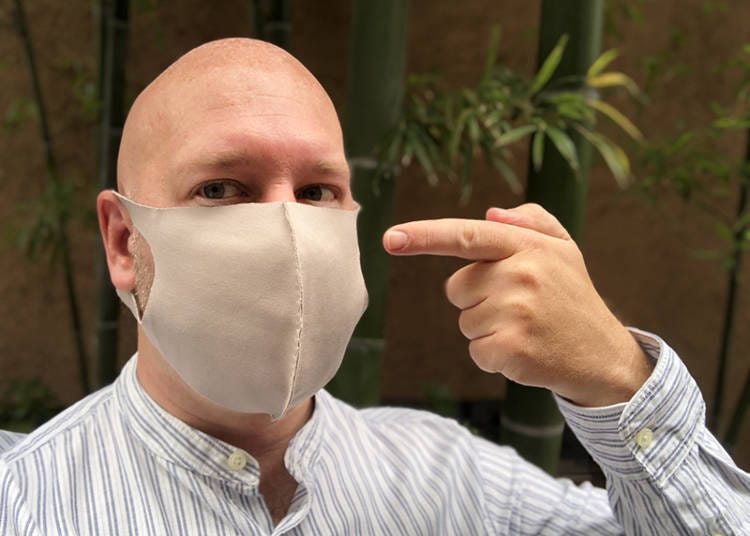
Tim used the one that I made at home with a sewing machine and non-fraying fabric. “Because it’s stretchy, this one is more comfortable. It’s also easy on my ears so I feel like it would be great for long-term wearing.”
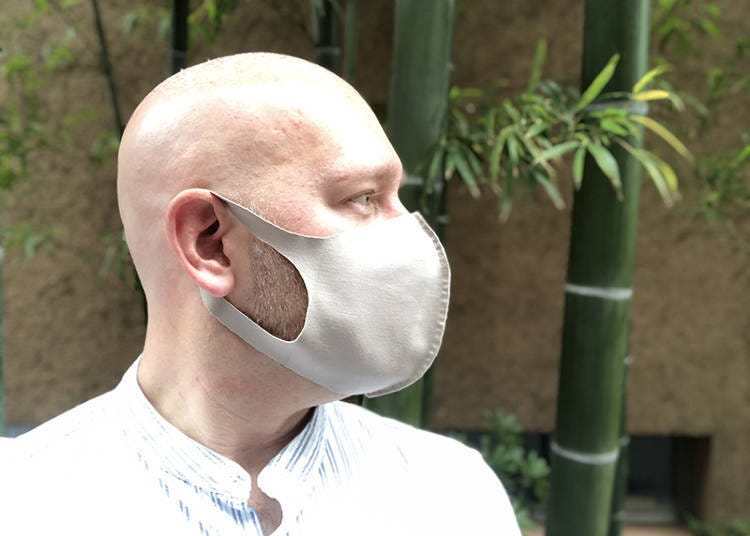
If you look at the profile, you can see that it sits reasonably flush to the face. “It fits so well to my face! But to get a completely perfect fit, I might even add a nose wire.” says Tim.
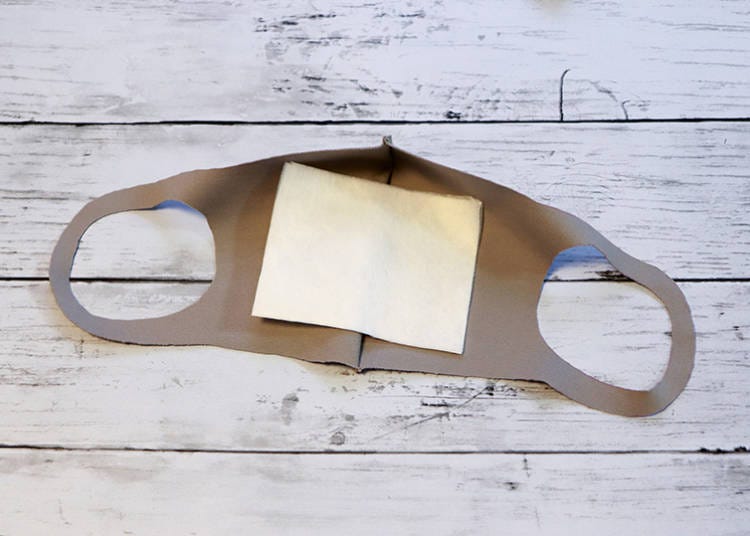
It’s quite a thin fabric, so you might feel a little less at ease. To combat this, the official Yuzawa instructions include a filter. You could use a non-woven fabric as a filter here – it will also prevent makeup stains!
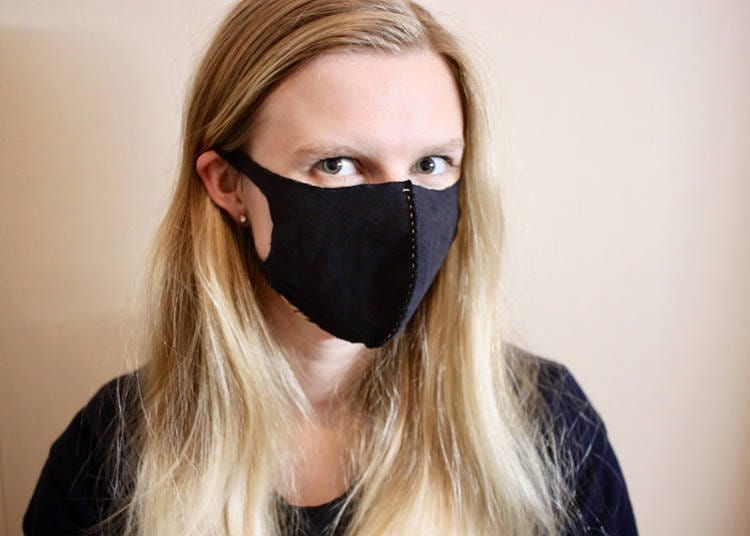
Cassie says “As I made it I kept checking the shape against my face. It fits really well except for a small space above my nose. However...”
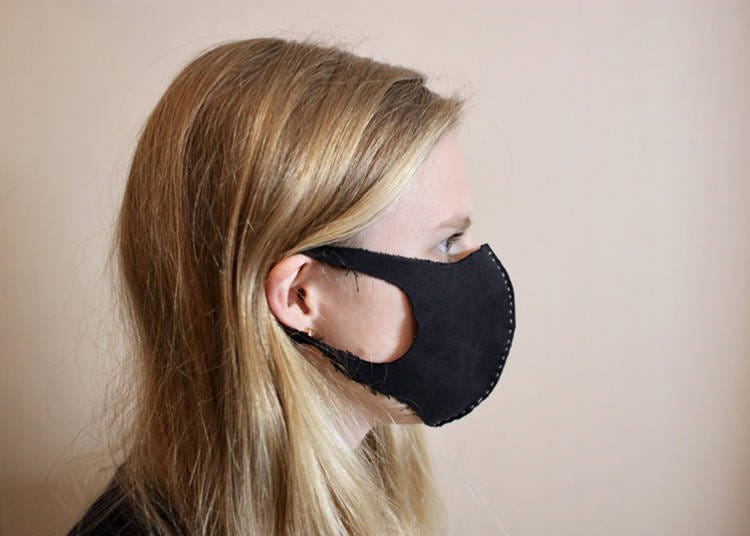
“If that space didn’t exist, I might not be able to breathe at all!”
But she added that “The skinny jeans fabric is quite elastic. I would simply recommend using a lighter, more breathable fabric if you have it. Even with this one, I can still breathe, and it would stop me from touching my face or allowing water droplets near my mouth when I’m out, so it would work perfectly fine for a short walk – it’s definitely better than nothing. I just need to be careful not to sneeze into it!”
"Stretch mask"
“Easy mask": Simple Stitch Mask
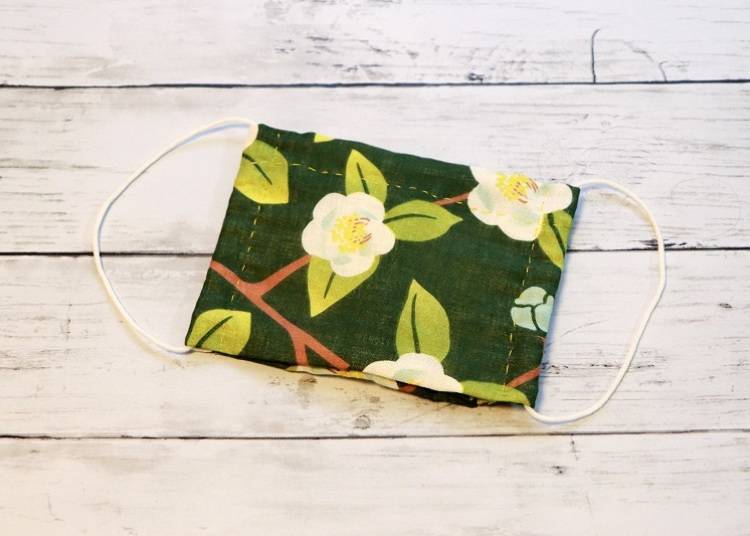
The last one is the "Easy Mask" (かんたんマスク). A mask that can be made with simple stitches.
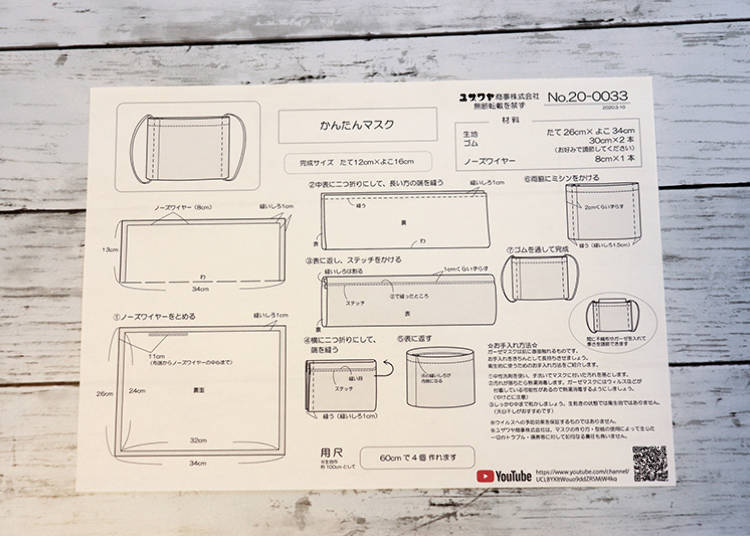
Again, we will be using Yuzawa’s instructional YouTube video for reference.
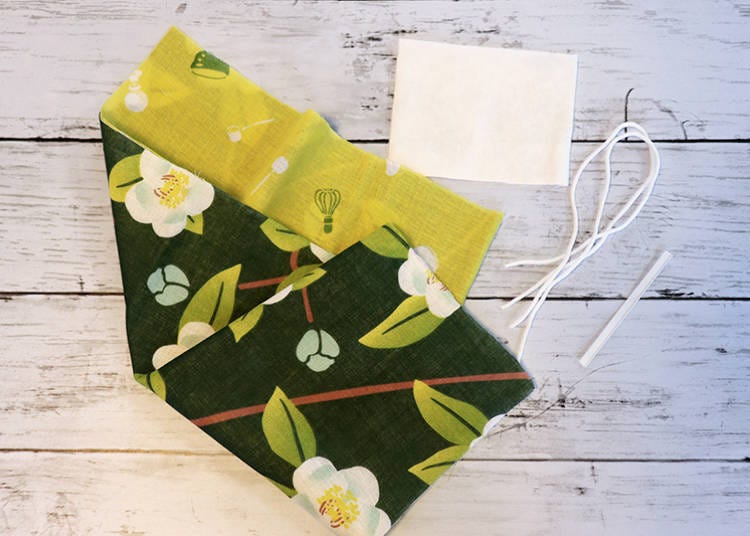
Material
-Breathable fabric of your choosing 26cm x 34cm
-Elastic 30 cm x 2 (adjust as you like)
-Nose wire 8 cm x 1
This tool requires a chalk pen or marker, a ruler, an iron, and a sewing machine or sewing equipment. It can be sewn by hand, but a sewing machine will make things easier seeing as there are quite a few places that need stitching. Today we'll try making it by hand.
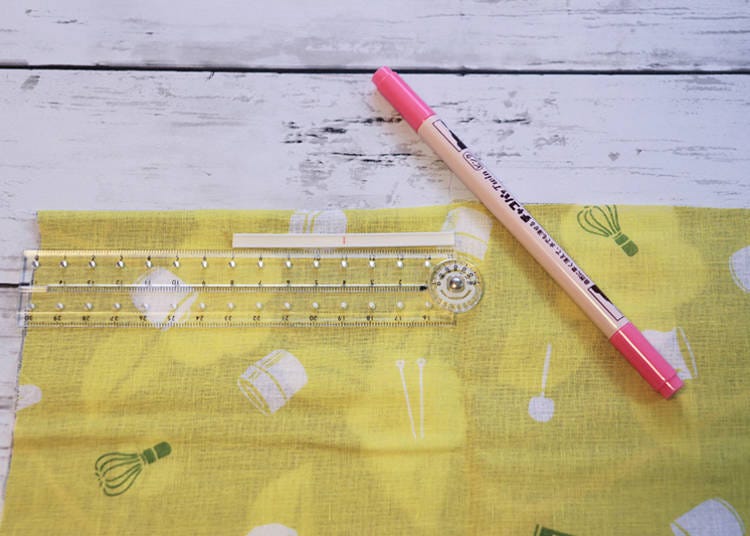
First up, affix the nose wire to the back of the fabric. With the fabric placed horizontally, leave a sewing margin 1 cm from the top, and position the middle point of the nose wire 11cm from the side. You’ll definitely need a ruler here!
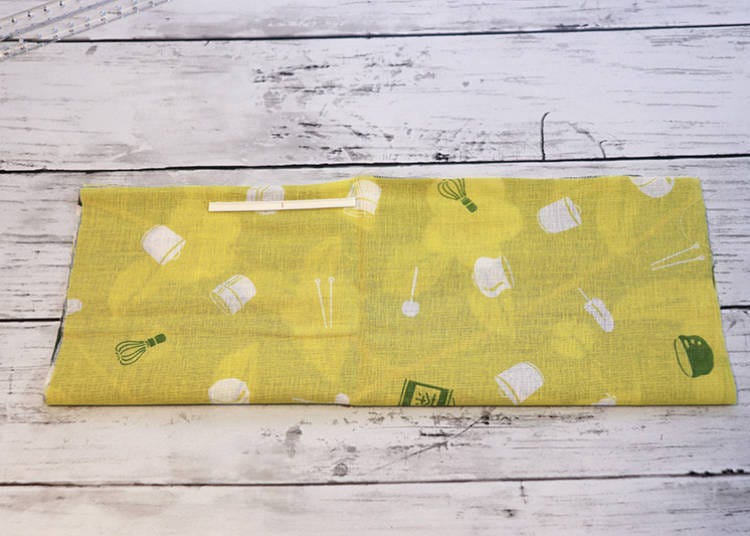
Fold the inside surface in half and sew 1 cm from the long end. After splitting the seam and ironing it, turn it over and iron it at the crease.
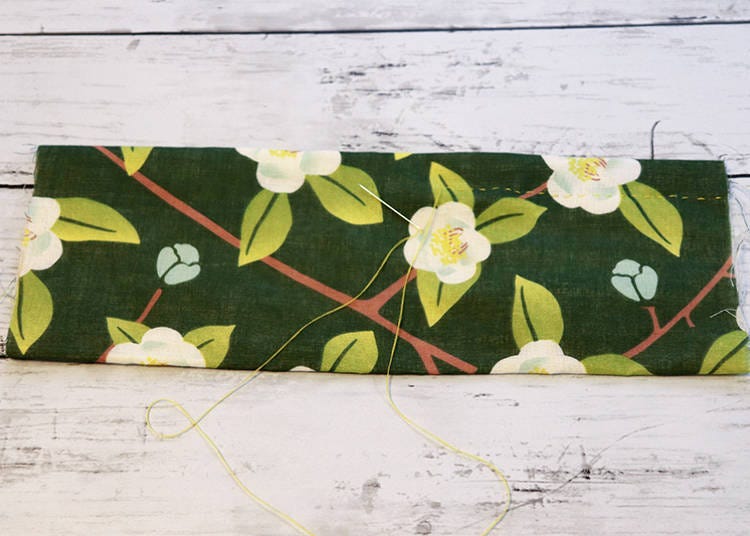
Stitch 2 cm from the top.
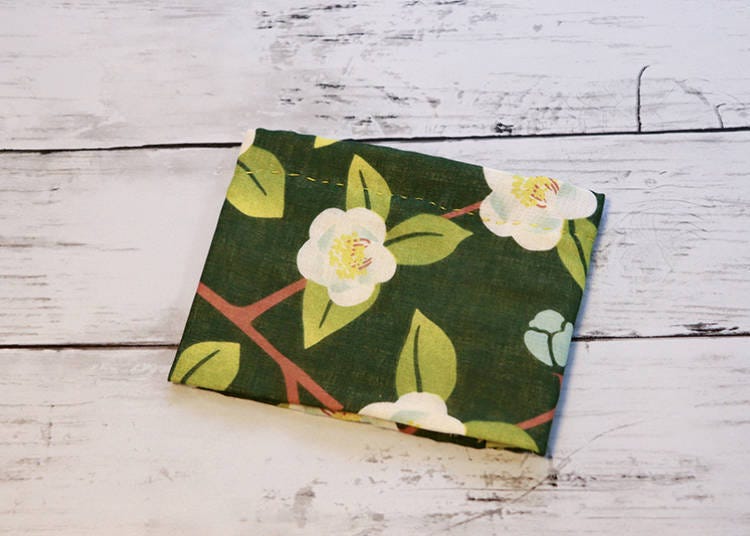
Fold it in half sideways and sew the ends, then turn it over. We can see the shape starting to form.
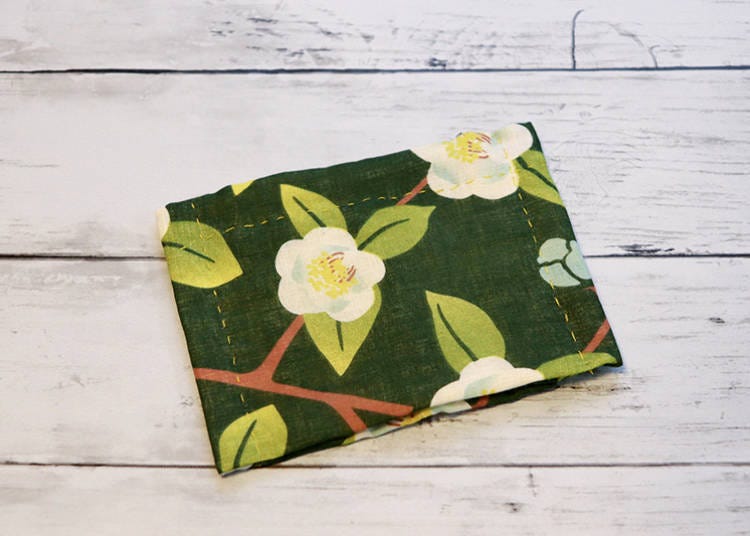
Sew about 1.5 cm of seam on both sides.
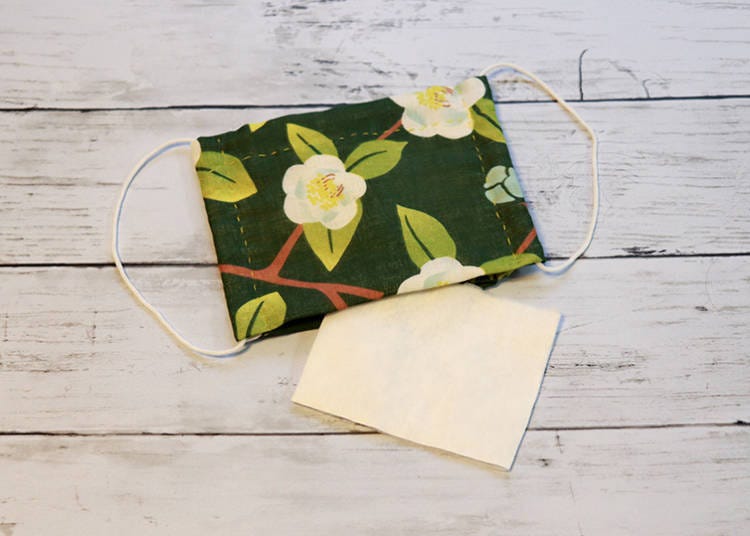
Thread the elastic through the sides, and add a filter between the layers if desired.
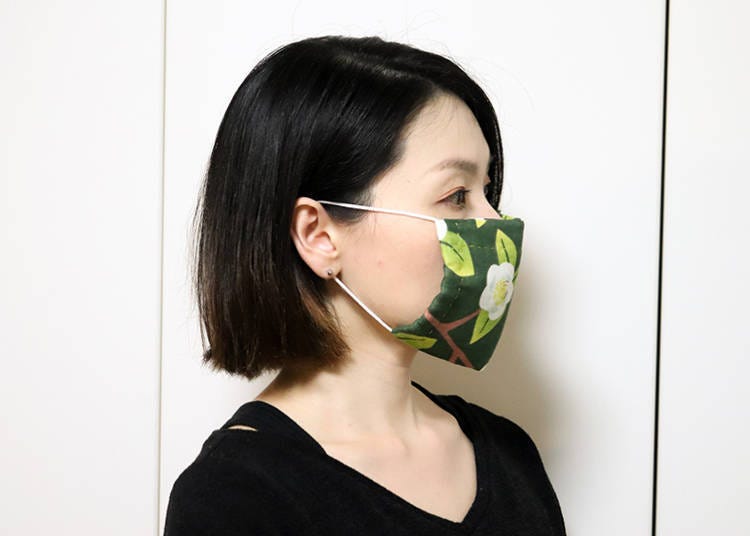
For mine, the fabric I used was “triple gauze”, so I was a little worried about how hard it would feel, but after washing it once, it felt much softer and was easier to use. It’s great for spring and winter, but for Japan’s hot summers I would definitely use a lighter fabric, and just not skimp on the filter!
"Easy mask"
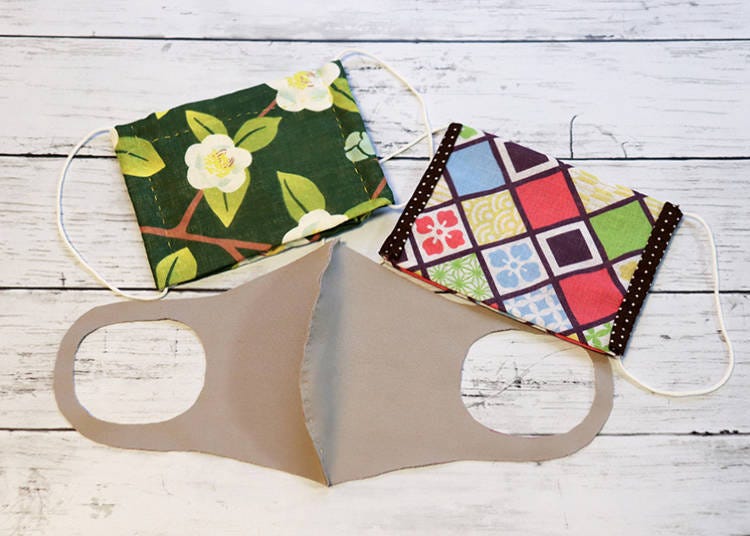
As we mentioned, Japan has been using masks for a long time, so there are a ton of different ideas for making masks and getting a bit creative.
“When a Japanese person catches a cold, most people will wear a mask to prevent spreading it to others. I like this kind of mask culture - If my country had a similar culture, would fewer people have gotten sick?!" says Tim (from America).
A mask is one of the easiest measures to take when you want to be careful about preventing infection, particularly by droplets. With handmade masks, you can make your favorite mask with any color and pattern. Let us know if you try one of these out!
Written by Jishikyu, translated by Cassie
Reference:
*Prices and options mentioned are subject to change.
*Unless stated otherwise, all prices include tax.
Recommended places for you
-

Kambei Sannomiyahonten
Yakiniku
Kobe, Sannomiya, Kitano
-

Jukuseiniku-to Namamottsuarera Nikubaru Italian Nikutaria Sannomiya
Izakaya
Kobe, Sannomiya, Kitano
-

Kanzenkoshitsuyakinikutabehodai Gyugyu Paradise Sannomiya
Yakiniku
Kobe, Sannomiya, Kitano
-
Goods

Yoshida Gennojo-Roho Kyoto Buddhist Altars
Gift Shops
Nijo Castle, Kyoto Imperial Palace
-

ISHIDAYA Hanare
Yakiniku
Kobe, Sannomiya, Kitano
-
Appealing

Rukku and Uohei
Izakaya
Sapporo / Chitose
-

'Is It Really Clean If...' 10 Things That Shocked an American Woman About Japan
-

Hachiji juppun mae – A Japanese phrase that even Japanese people can’t agree on the meaning of
-

Japan Summer Sales 2025: Your Ultimate Guide to Shopping Deals In Tokyo, Kansai & More!
-

'They Do What in the Toilet?!' Italians Shocked By These Japanese Beauty Quirks
by: Yuu Sato
-

Police to ticket cyclists riding on sidewalks, which amounts to almost all cyclists in Japan
-

Tokyo's Top Electronics Stores: Find Your Perfect Store by Purpose & Style (Major Retailers, Gaming, Cameras & More)
by: Ran Tanaka
-

Fans Rejoice! 'Harry Potter' Attraction Opens in Tokyo June 16
-

Shine Bright This Winter: 15 Must-See Tokyo Illuminations (2024-2025)
by: Kaori Kimura
-

Michelin Star Restaurants & More: 3 Best Okonomiyaki Shops in Dotonbori Osaka
-

Guide to Tokyo's Old Quarter: 7 Quaint Spots in Yanesen!
-

Ring in 2024–25: Top 10 New Year's Events & Countdown Parties in Tokyo (With Train Schedules)
by: Kaori Kimura
-

Meiji Shrine (Meiji Jingu): Exploring the Sacred Sanctuary of Peace in Bustling Tokyo
- #best sushi japan
- #what to do in odaiba
- #what to bring to japan
- #new years in tokyo
- #best ramen japan
- #what to buy in ameyoko
- #japanese nail trends
- #things to do japan
- #onsen tattoo friendly tokyo
- #daiso
- #best coffee japan
- #best japanese soft drinks
- #best yakiniku japan
- #japanese fashion culture
- #japanese convenience store snacks













